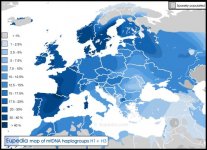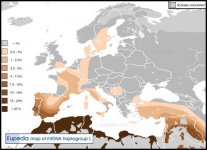Do u have any real sources to say Basque culture is matriarchal.
Basque culture is derived from Celt culture and we know Celt culture is matriarchal, all you have to do is read the Celt wikipedia page
 Gender and sexual norms
Gender and sexual norms


Reconstruction of a German Iron Age Celtic warrior's garments
According to
Aristotle, most "belligerent nations" were strongly influenced by their women, but the Celts were unusual because their men openly preferred male lovers (
Politics II 1269b).
[78] H. D. Rankin in
Celts and the Classical World notes that "Athenaeus echoes this comment (603a) and so does
Ammianus (30.9). It seems to be the general opinion of antiquity."
[79] In book XIII of his
Deipnosophists, the Roman Greek rhetorician and grammarian
Athenaeus, repeating assertions made by
Diodorus Siculus in the 1st century BC (
Bibliotheca historica 5:32), wrote that Celtic women were beautiful but that the men preferred to sleep together. Diodorus went further, stating that "the young men will offer themselves to strangers and are insulted if the offer is refused". Rankin argues that the ultimate source of these assertions is likely to be
Poseidonius and speculates that these authors may be recording male "bonding rituals".
[80]
The
sexual freedom of women in Britain was noted by
Cassius Dio:
[81]... a very witty remark is reported to have been made by the wife of Argentocoxus, a Caledonian, to
Julia Augusta. When the empress was jesting with her, after the treaty, about the free intercourse of her sex with men in Britain, she replied: "We fulfill the demands of nature in a much better way than do you Roman women; for we consort openly with the best men, whereas you let yourselves be debauched in secret by the vilest." Such was the retort of the British woman.
—
Cassius Dio
There are instances recorded where women participated both in warfare and in kingship, although they were in the minority in these areas.
Plutarch reports that Celtic women acted as ambassadors to avoid a war among Celts chiefdoms in the Po valley during the 4th century BC.
[82]
Very few reliable sources exist regarding Celtic views towards gender divisions and societal status, though some archaeological evidence does suggest that their views towards
gender roles may differ from contemporary and less
egalitarian classical counterparts of the Roman era.
[83][84]
There are some general indications from Iron Age burial sites in the Champagne and Bourgogne regions of Northeastern France suggesting that women may have had roles in combat during the earlier
La Tène period. However, the evidence is far from conclusive.
[85] Examples of individuals buried with both female jewellery and weaponry have been identified, such as the
Vix Grave, and there are questions about the gender of some skeletons that were buried with warrior assemblages. However, it has been suggested that "the weapons may indicate rank instead of masculinity".
[86]
Among the insular Celts, there is a greater amount of historic documentation to suggest warrior roles for women. In addition to commentary by
Tacitus about
Boudica, there are indications from later period histories that also suggest a more substantial role for "women as warriors", in symbolic if not actual roles.
Posidonius and
Strabo described an island of women where men could not venture for fear of death, and where the women ripped each other apart.
[87] Other writers, such as
Ammianus Marcellinus and
Tacitus, mentioned Celtic women inciting, participating in, and leading battles.
[88] Poseidonius' anthropological comments on the Celts had common themes, primarily
primitivism, extreme ferocity, cruel sacrificial practices, and the strength and courage of their women.
[89]
Under
Brehon Law, which was written down in
early Medieval Ireland after
conversion to Christianity, a woman had the right to divorce her husband and gain his property if he was unable to perform his marital duties due to impotence, obesity, homosexual inclination or preference for other women.
[90]
The obvious truth here is that R1b has nothing to do with the spread of Indo-European languages. Indo-European languages were spread by R1a, which is why we see Indo European in India, along with R1a, but not R1b. No scholar anywhere associates R1b with Indo Europeans, but there is a standing theory linking it to R1a. The whole R1b=Indo European thing is just a bullshit fantasy existing only on this site. Its unfortunate as the maps are pretty good otherwise.





